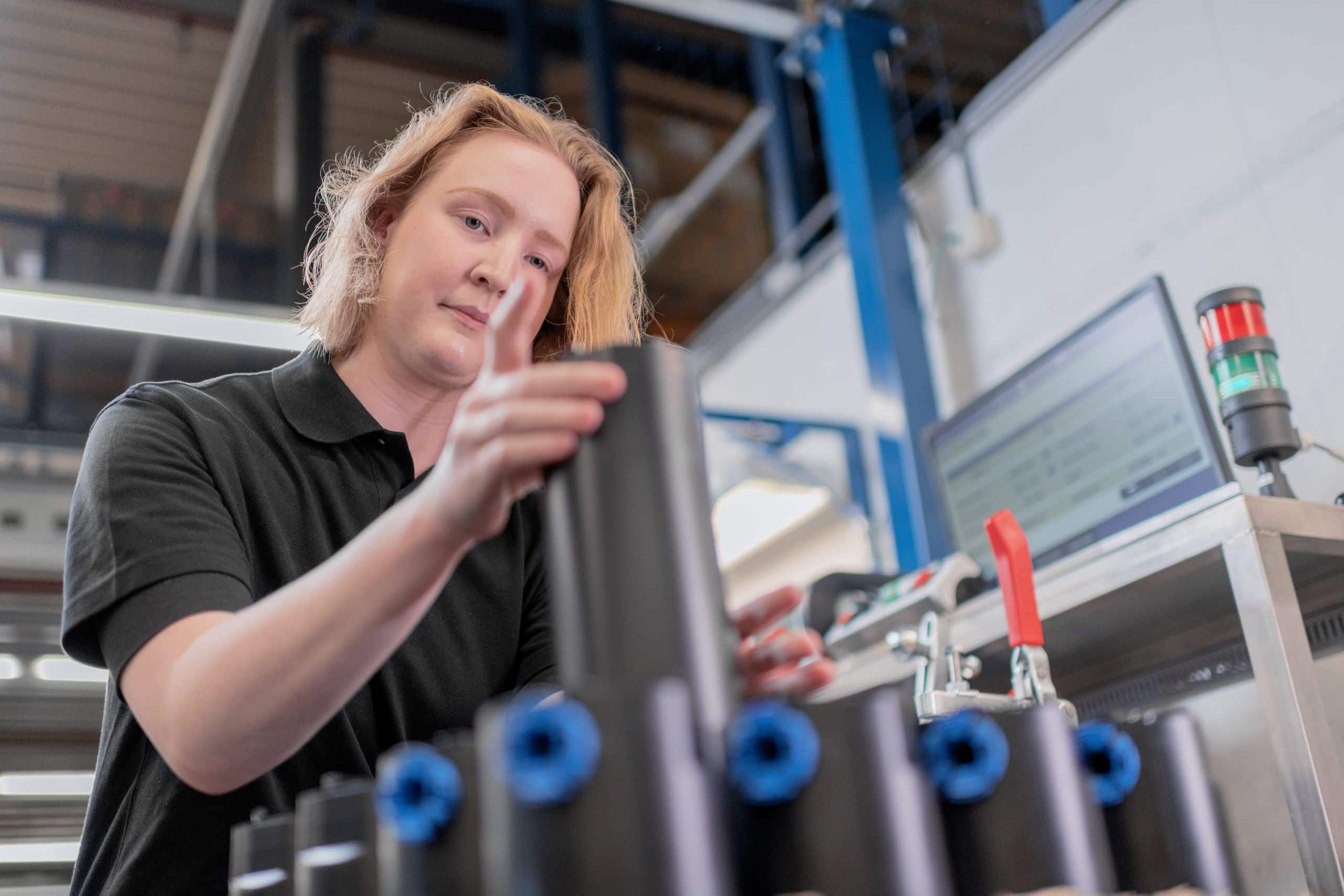
Assembly
Assembly forms the link between individual plastic parts and fully functional end products. At Timmerije, this takes place in a specially designed department, where a dedicated team assembles, tests, and prepares customer-specific products for use or shipment daily. Because this work is carried out in-house, Timmerije can respond quickly, coordinate processes efficiently, and guarantee high quality and flexibility.
What is assembly?
Assembly is the process of combining individual parts into a complete and functional final product. In the plastics industry, this includes the joining of molded parts: components and subassemblies are carefully assembled, tested, and inspected. The goal of assembly is not only to join parts but also to guarantee functionality, reliability, and consistent quality. Through structured processes and a precise approach, assembly proceeds efficiently and produces products that are ready for use or further processing.
Value of customer-specific assembly
Customer-specific assembly at Timmerije means that the assembly process is designed based on the customer’s unique wishes and requirements. This includes specific assembly methods, sequences, tolerances, test procedures, and packaging solutions tailored to the end use or the next step in the supply chain. Whether it involves assembling sub-assemblies or applying customer-specific printing, every assembly line can be custom-designed and configured.
Where necessary, the assembly process is fully tailored to the product and application, ensuring the final result is immediately usable. This may involve developing special assembly jigs, applying unique test protocols, or using packaging that is immediately suitable for distribution or final assembly at the customer’s premises. By achieving this coordination early on, the assembly process seamlessly integrates with the rest of the production process. Timmerije offers customized solutions where required, guarantees consistent quality through direct, product-specific inspections, and realizes time and cost savings through optimal coordination throughout the entire supply chain.
Additional post-processing
At Timmerije’s assembly department, plastic products can not only be assembled but also be immediately subjected to additional post-processing. These processes are integrated into the production process, allowing products to be fully prepared for logistics in a single, continuous line.
Options include mounting additional components, applying fasteners, performing functional tests, packaging in customer-specific packaging, and applying printing. By performing these steps in-house, lead times are shortened, transport movements are minimized, and quality control remains fully in-house.
Digital printing of plastic parts
A striking example of integrated finishing is the digital printing of plastic parts. Timmerije has two advanced digital printers, one for black and white and one for color. These are used to apply logos, product information, displays, or user interfaces to products after injection molding and before final assembly. Thanks to LED UV curing, the print adheres optimally, dries instantly, and is both wear- and color-fast. This makes it possible to apply high-quality, durable printing to large or complex products, such as machine covers or water reservoirs for coffee machines. Even products that must comply with specific standards, such as food contact standards, can be finished efficiently and flexibly in this way, without the need for external processing.
Why choose in-house assembly?
In-house assembly at Timmerije creates a direct link with product design, engineering, and production, ensuring complete control over quality, speed, and flexibility. By performing additional post-processing directly in the assembly department, the need for external processing steps is eliminated. This prevents additional handling with the risk of damage and eliminates transport movements, directly contributing to lower CO2 emissions.
This integrated approach enhances quality and makes the process extremely flexible, allowing for quick and efficient communication with the customer in the event of changes. The result is a complete, tested, and ready-to-use product that is delivered reliably and in accordance with agreed-upon specifications.